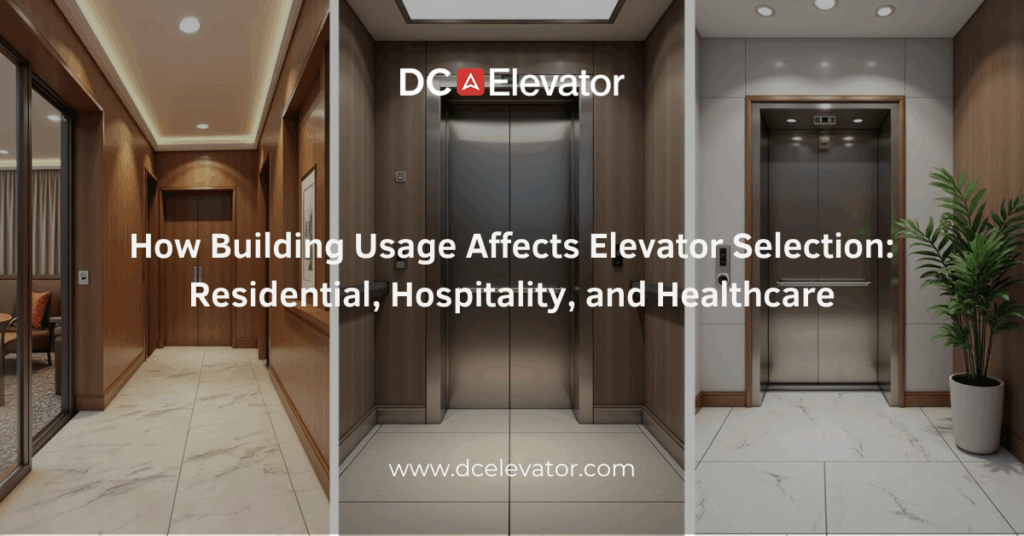Have you ever wondered why elevators in hotels feel different from those in residential buildings—or why hospitals often feature larger, slower-moving cars? The reason lies in building usage. Elevators aren’t one-size-fits-all; the type of property directly influences which system will deliver the best safety, efficiency, and experience for passengers. For building owners and facility managers, choosing the wrong elevator type can lead to performance issues, tenant frustration, or even higher maintenance costs. Understanding how residential, hospitality, and healthcare buildings uniquely impact elevator selection is essential for ensuring smooth, reliable operations that align with each facility’s needs.
Residential Buildings: Prioritizing Comfort and Reliability
In residential complexes, elevators are often used during peak hours—mornings and evenings—when residents leave for or return from work. While usage may not match the intensity of a hospital or hotel, reliability and smooth operation are crucial to maintaining tenant satisfaction.
-
Key Considerations: Moderate capacity, quiet operation, energy efficiency, and ease of maintenance.
-
Common Challenges: Long wait times in high-rise apartments during peak hours if elevator count or speed is insufficient.
-
Solution: Installing elevators designed with moderate speed and capacity ensures comfort while balancing cost efficiency. Regular maintenance also prevents inconvenient downtime for residents.
Hospitality: Speed and Guest Experience Matter
Hotels face unique elevator demands, where both performance and design play a role in shaping guest perception. Guests expect minimal wait times and a comfortable ride—especially during check-in and check-out rush hours when traffic is heaviest.
-
Key Considerations: High-speed systems, stylish interiors, and smooth operation to match the hotel’s brand experience.
-
Common Challenges: Heavy luggage transport, peak-hour bottlenecks, and wear from constant usage.
-
Solution: High-capacity, high-speed elevators are essential, often with multiple cars working in tandem. Adding design elements such as premium finishes enhances the guest experience while reinforcing the hotel’s image.
Healthcare: Safety and Accessibility First
Hospitals and healthcare facilities require elevators tailored to life-and-death situations. Reliability, safety, and accessibility take priority over speed or aesthetics. Elevators must be able to transport patients on stretchers, medical staff, and equipment quickly and safely, often under urgent conditions.
-
Key Considerations: Larger cab sizes, slower but steadier operation, ADA compliance, and specialized features such as emergency power backup.
-
Common Challenges: Heavy daily use, high sanitation requirements, and the need for absolute reliability.
-
Solution: Elevators designed with oversized dimensions, anti-microbial finishes, and advanced safety features ensure safe and efficient transport of patients and staff.
Matching the Right Elevator to the Right Building
Every property type has unique elevator requirements that reflect its core purpose—whether it’s ensuring tenant comfort, enhancing guest experience, or supporting lifesaving operations. Partnering with experienced professionals ensures your elevator selection matches both functional needs and long-term operational efficiency.
Choosing the right elevator isn’t just a technical decision—it’s about meeting the expectations of the people who rely on it every day. Residential, hospitality, and healthcare facilities each have distinct needs, and selecting the right system can improve safety, efficiency, and satisfaction while reducing long-term costs.
If you’re unsure whether your current elevator setup matches your building’s needs, our experts can help. Contact us today for an elevator analysis to ensure your system is the right fit for your property’s unique demands.
